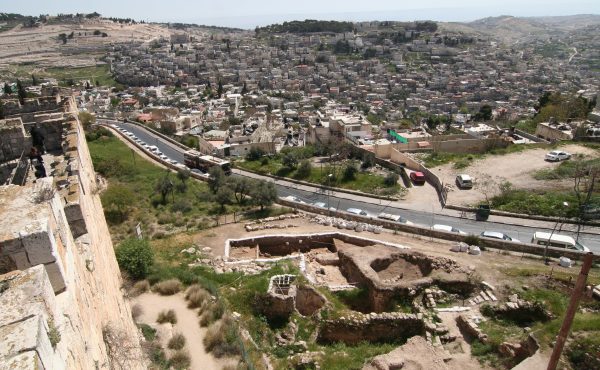UNC Charlotte Team Finds Rare Roman Gold Coin at Mount Zion Dig

UNC Charlotte’s team that is conducting archaeological excavations on Mount Zion in Jerusalem has discovered a rare gold coin bearing the image of the Roman Emperor Nero.
“The coin is exceptional, because this is the first time that a coin of this kind has turned up in Jerusalem in a scientific dig,” said Shimon Gibson, co-director of the excavation and a visiting professor at UNC Charlotte. “Coins of this type are usually only found in private collections, where we don’t have clear evidence as to place of origin.”
The gold coin (aureus) bears the bare-headed portrait of the young Nero as Caesar. The lettering around the edge of the coin reads “NERO CAESAR AVG IMP.” On the reverse of the coin is a depiction of an oak wreath containing the letters “EX S C,” with the surrounding inscription “PONTIF MAX TR P III.”
 Importantly, these inscriptions help to work out the date when the coin was struck as 56/57 A.D. Historian and numismatist David Jacobson of London made identification of the coin.
Importantly, these inscriptions help to work out the date when the coin was struck as 56/57 A.D. Historian and numismatist David Jacobson of London made identification of the coin.
The coin dates to a little more than a decade before the destruction of Jerusalem by the Romans in 70 A.D. and was found in rubble material outside the ruins of the first century Jewish villas the team has been excavating. The team has hypothesized that the large houses may have belonged to wealthy members of the priestly caste, and it may have come from one of their stores of wealth.
“The coin probably came from one of the rich 2,000-year old Jewish dwellings which the UNC Charlotte team have been uncovering at the site,” Gibson said. “These belonged to the priestly and aristocratic quarter located in the Upper City of Jerusalem. Finds include the well-preserved rooms of a very large mansion, a Jewish ritual pool (mikveh) and a bathroom, both with their ceilings intact.”
The image of Nero is significant in that it shows the presence of the Roman occupation and provides a clear, late date for the occupation of the residences. There is no historical evidence that Nero ever visited Jerusalem.
James Tabor, co-director of the excavation and Professor of Ancient Judaism and Early Christianity in the Department of Religious Studies, pointed out that the coin is dated “to the same year of St. Paul’s last visit to Jerusalem, which resulted in his arrest (on the charge of taking Gentiles into the Temple) and incarceration in Caesarea.”
The Mount Zion archaeological project has brought to light other significant finds during the 2016 summer season and past seasons, and work at the site will resume next year. The purpose of the Mount Zion Project is to expose, examine and preserve all levels of habitation over the course of Jerusalem’s 3,000-year history.
The Mount Zion Project advances research and teaching in the humanities by bringing together students, scholars, and a diverse range of professionals in the study and practice of cultural transformation. At the heart of the program is a summer study abroad course in Jerusalem for UNC Charlotte students, who are joined by a large number of community participants from all over the world.
The project is under the academic oversight of the University of North Carolina at Charlotte, the only American university currently licensed to carry out such excavations in Jerusalem.